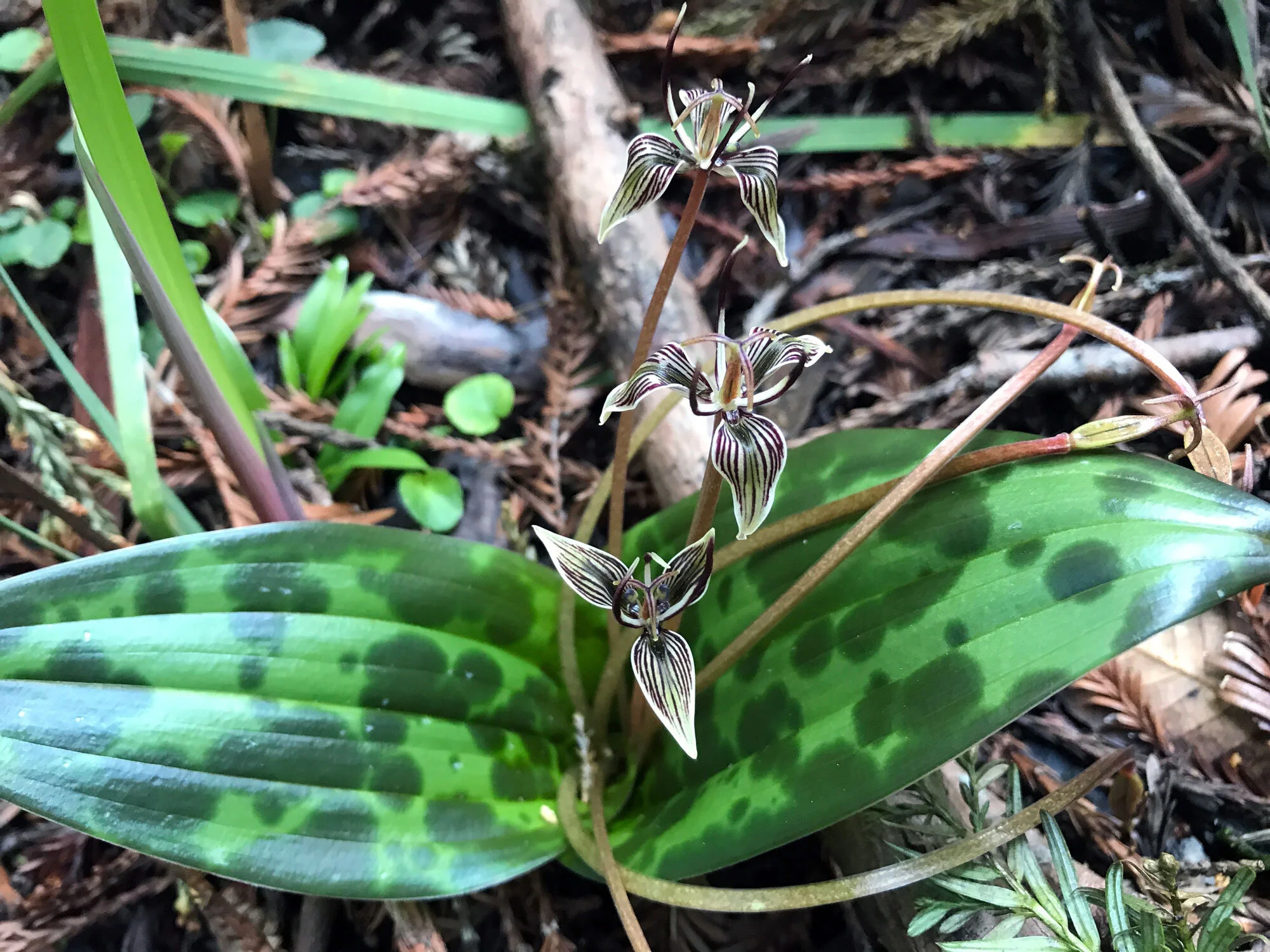California fetid adderstongue revisited
Last year in February, I timed my foray for California Fetid Adderstongue (Scoliopus bigelovii) a little early. This year, I waited until mid-March to revisit the quest. My reward was an abundance of adderstongue in all stages of growth. Most of the plants had already flowered and were now fruiting. What really surprised me was how much I had missed when observing this ominously-named lily.
This time, I noticed the many pale tentacle-like stems arching downward from the center of the mottled leaves, a seed pod dangling at their end. Each lily had at least two stems and as many as a dozen. They were splayed in all directions like spaghetti. I moved some stems temporarily onto the leaf to photograph the seed pods. Then, I made a discovery. These seed pods were flowers that had lost their petals and all their other parts. That should not have been a surprise but I only saw evidence of their transformation in one plant that was shedding its petals. I had mostly ignored the fruiting stems the year before in pursuit of the flowers. Once again, I learned a lesson in taking time to explore. Indeed, the adderstongue flower is an umbel. The flower is a cluster with the individual flower stalks rising from about the same point at the base of the leaves, the plant stem extending underground. Wondering if I could smell the “fetid” namesake of the lily, I put my head on the ground next to the blooming flower and inhaled deeply. I noticed a vague whiff of decay, most likely from the duff around the plant rather than the blossom.
The Fetid adderstongue is visually stunning with stark contrasts. It’s waxy leaves are grassy or olive green with splotches of color ranging from dark green to brownish-purple. The small pointed flowers have three white petals (technically sepals) with vivid maroon stripes. If you look very closely, you will see three tiny dark dots on tiny stems in the center. These are the barely-noticeable stamen. A trio of maroon spikes with white undersides and tips are the petals. They alternate with the striped sepals, towering above the green pistil (seed pod or ovary). The style (stem of the pistil) has three downward-facing ends that complement the downward facing sepals and contrast with the vertical inward arching petals and stamen. A beautiful symmetry of parts.
Next year, I would like to observe this fascinating lily even more intensively. I envision sitting in a patch of blooming lilies and watching for the fungus gnat that pollinates the lily and the ants that carry away the seed pods. We’ll see if my patience matches my intentions!
A closer look at budding and fruiting
Where to find them
Two hotspots for these lilies on the Bolinas Ridge Trail are the south end of the trail and the section of trail between the McCurdy Trail heading south to the water tower. To get an easy look without hiking far, park at the south end of the trail on Fairfax-Bolinas Road and look on the right side of the trail in the first fifty feet. It’s 4.5 miles from Shoreline Highway (Highway 1), about a 15 minute drive on a very winding road.


















